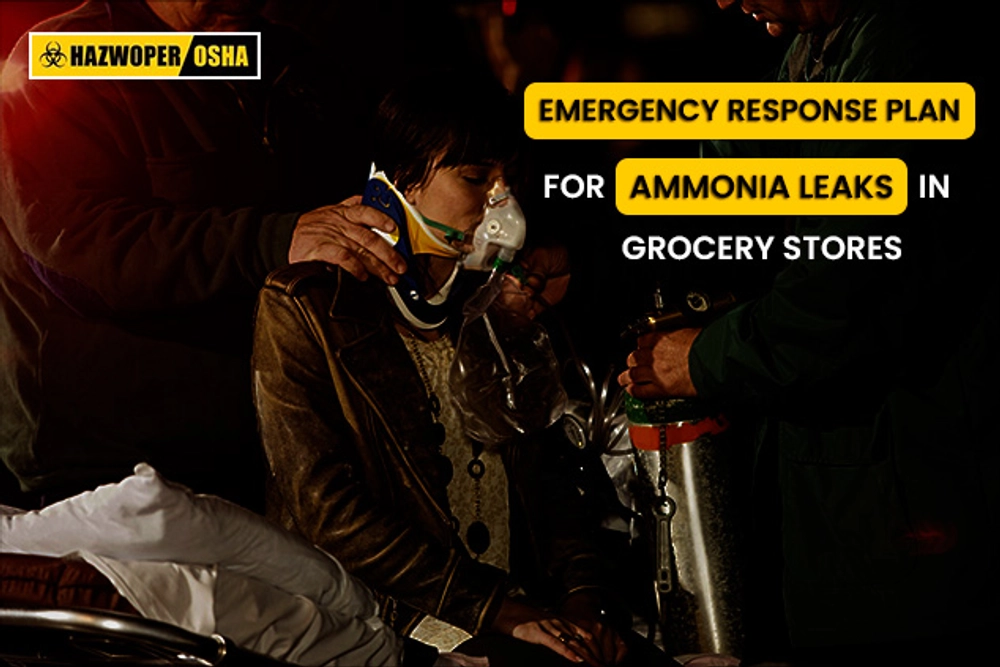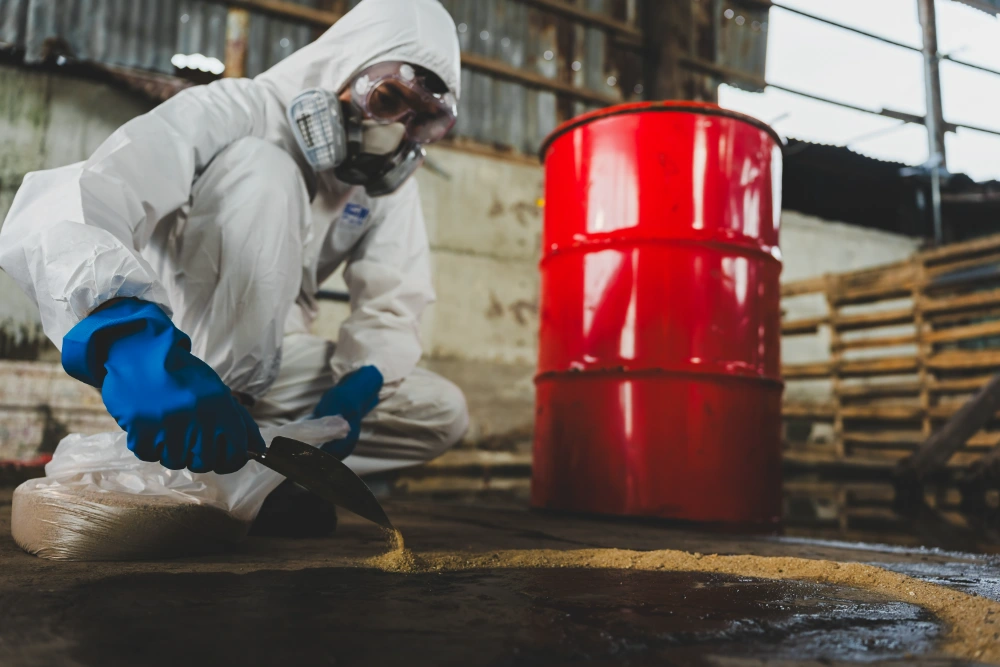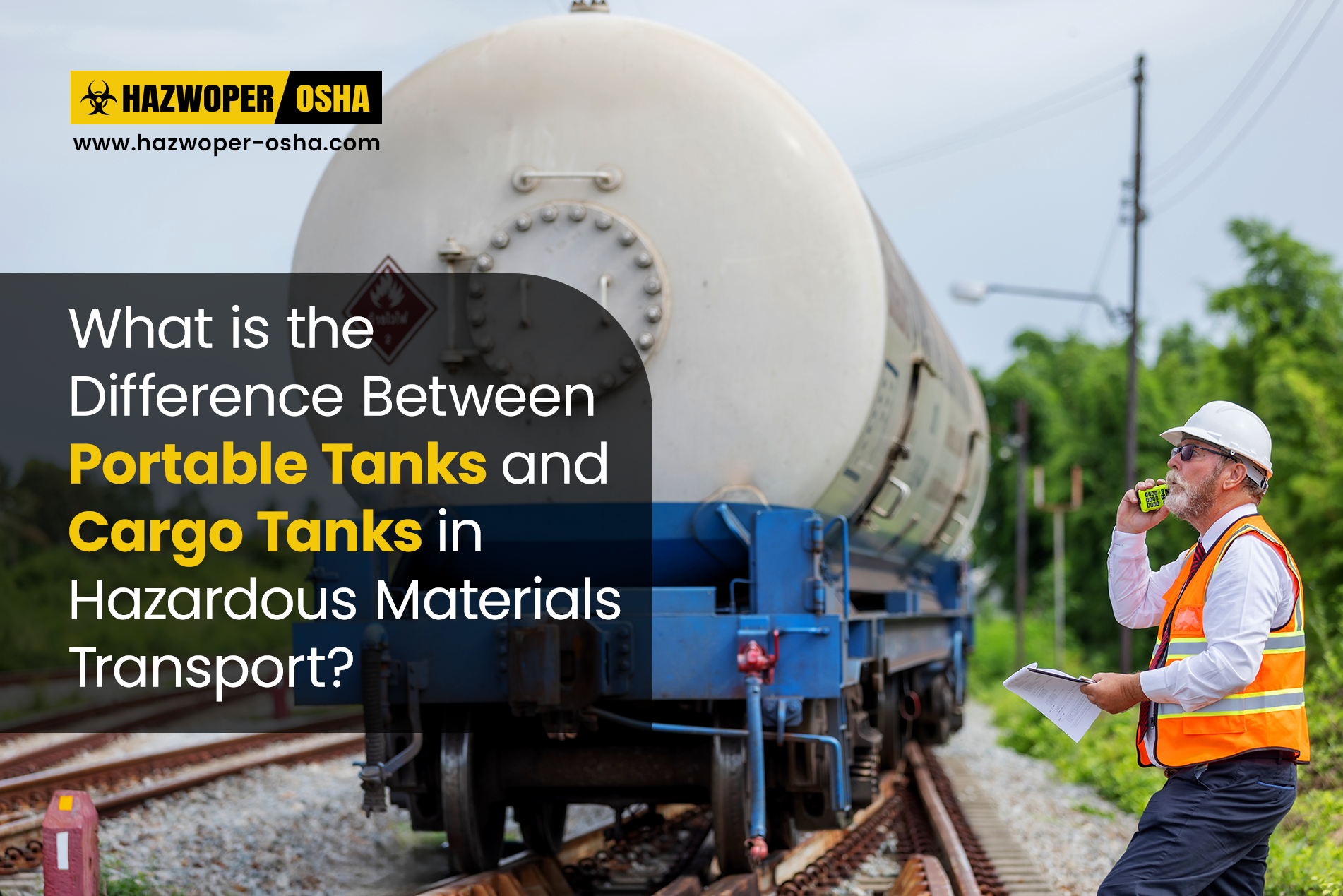Emergency Response Plan for Ammonia Leaks in Grocery Stores

Introduction:
In grocery stores, Ammonia refrigeration system is used widely, as it is an efficient refrigerant and is cost-effective. However, Ammonia Refrigeration Systems have certain risks associated with their usage, especially in the case of Ammonia leakage. Ammonia leaks lead to major injuries and can even be fatal, as reported at one of America's largest meat processors Tyson Foods plants. In this food plant, at least 47 ammonia leaks occurred from 2012 to 2021, leading to 150 workers' injuries.
To diminish these risks, grocery stores must have a detailed emergency response plan to follow. There must be procedures in place to detect and manage leaks, along with protocols for areas' evacuation and medical assistance. In this article, we will focus on the hazards of Ammonia leaks, an effective emergency response plan, and OSHA's training requirements and guidelines to tackle ammonia leakage.
What are the Possible Reasons for Ammonia Leaks?
Ammonia Leaks occur due to equipment failures, corrosion, poor maintenance, and accidents. The U.S. Environmental Protection Agency (EPA) mentions that plant upsets, piping failures, maintenance errors, hose failures, collisions, and hydraulic shock are the most common sources of ammonia leaks. In grocery stores, ammonia leaks are standard, as 60% of Walmart stores have refrigerant leaks, and 55% of all stores have ammonia leaks.
How Hazardous Can Ammonia Leaks Be?
Exposure to Ammonia can lead to skin irritation, respiratory issues, and eye damage ; all these issues range from causing mild discomfort to a life-threatening state.
- Ammonia vapor inhalation causes coughing, shortness of breath, and major respiratory distress.
- Contact with ammonia in the eyes results in burning and irritation.
- Extended exposure to ammonia leads to corneal burns and permanent eye damage.
- The corrosive nature of ammonia causes skin burns, irritation, dermatitis, and chemical burns.
- Exposure to high concentrations of ammonia deters the central nervous system, leading to fatal consequences.
Additionally, to these risks' ammonia leaks majorly harm the store operations and general safety, leading to issues such as property damage, equipment failure and environmental contamination. Small ammonia leaks cause flammable ammonia-air mixtures. Ammonia is not flammable, but it intensifies existing fires in stores by providing more oxygen to it. In steel, stress corrosion cracking occurs due to ammonia corrosion. In pressure vessels, ammonia contaminants come into contact with steel, leading to corrosion.
Food products can get contaminated due to ammonia leaks. In meat stores, low levels of ammonia exposure can lead to rapid development of rancid flavor, discoloration , and off-odors. Ammonia also degrades some types of packing materials such as some plastics and corrugated fiberboard leading to damaged packing material and even more food contamination. So, ammonia leakage can potentially make the food in grocery stores inappropriate for human consumption and lead to expensive product losses for the store.
How do OSHA's protocols help to prevent and deal with Ammonia Leaks?
Ammonia use in grocery stores is regulated by OSHA standards (29 CFR 1910.119) and (29 CFR 1910.120). These regulations make the employer's duty to take steps to effectively manage and respond to incidents of ammonia leaks.
The Process Safety Management standard of OSHA (29 CFR 1910.119) requires:
- A detailed safety management plan with steps for detecting and countering ammonia leaks.
- Regular training of employees.
- Accurate records of storage and chemical leaks.
The Hazardous Waste Operations and Emergency Response (HAZWOPER) standard (29 CFR 1910.120) of OSHA pertains to employers dealing with hazardous waste. This standard focuses on correct waste handling, hazardous waste disposal, and procedures for emergency responses.
How can the Emergency Action Plan be aligned with OSHA's PSM & HAZWOPER standards?
Incorporate the following points in your EAP to align with OSHA's process safety management (PSM) and Hazardous Waste Operations and Emergency Response (HAZWOPER) standards:
PSM Alignment:
- Add procedures for conducting small releases of highly hazardous chemicals (HHCs) and direct the technical basis for proposed changes.
- Perform a PHA to recognize the potential hazards and craft procedures to mitigate them.
- Employees should participate in the EAP development and implementation.
- Give detailed training on operating procedures, processes, safe work practices, and emergency operations.
- Maintain records of equipment tests and inspections to ensure mechanical integrity.
HAZWOPER Alignment:
- The EAP must contain the actions of all employees, including those with physical disabilities.
- Outline both major and minor incident procedures.
- Offer inclusive training for employees appointed to manage minor emergencies.
- Preplanning for Major Incidents: Have preplanned actions for major chemical releases in place.
- Develop an emergency control center with detailed communication tools and emergency plans.
An Effective Emergency Response Plan for Ammonia Leaks
To ensure customers' and employees' safety and a safe grocery store environment, an effective emergency action plan for ammonia leaks is a must. It should entail the following sections and details:
1. Preparation:
- Risk Assessment: In the refrigeration systems, identify the potential ammonia leak sources.
- Emergency Kit: Keep a stock of emergency response equipment such as ammonia detectors, personal protective equipment (PPE) and first aid kit.
- Training: Train employees regularly on ammonia hazards, use of PPE, and emergency procedures.
2. Detection:
- Monitoring Systems: To immediately identify the ammonia leaks, install ammonia detectors with alarms.
- Regular Inspections: Regularly maintain and inspect the refrigeration systems to avoid leaks.
3. Response:
- Evacuation: Quickly move out all the customers and non-essential personnel from space.
- Emergency Contacts: A list of emergency services contact numbers must be available, and they must be notified.
- Containment: Confine the leak area and turn off the ammonia source if it is safe.
- Ventilation: Ventilate the affected area to disperse the ammonia gas.
4. Communication:
- Alert System: Install an alarm system to notify customers and employees of the leak immediately.
- Information Dissemination: Use a public address system or trained personnel to give clear instructions.
5. Medical Response:
- First Aid: Immediately provide oxygen to the exposed people, move them to the fresh air, and administer oxygen if required.
- Medical Treatment: Make sure affected individuals receive immediate medical attention.
6. Post-Incident:
- Decontamination: Follow the safety guidelines to decontaminate the affected area properly.
- Investigation: Investigate in detail to determine the cause of the leak and prevent future incidents.
- Review and Update: Review and update the emergency response plan regularly to accommodate the lessons learned and new regulations.
7. Training and Drills:
- Routine Drills: Ensure readiness and efficiency in response and conduct regular drills.
- Ongoing Learning: Educate the employees continuously on ammonia safety and emergency response and procedures. HAZWOPER OSHA Training LLC has a series of courses that focus on Ammonia refrigeration systems, including safety awareness , design and operations , and purging and piping strategies. You can check them out on our website.
The Wrap Up:
In the grocery stores, to ensure the safety of customers and employees proper training regarding ammonia leaks emergencies is a necessity. Every grocery store must have an emergency action plan in place to deal with hazardous chemicals such as Ammonia. By implementing OSHA's guidelines, the grocery store staff can effectively respond to Ammonia leak emergencies.
References:
Calibration Technologies, 11th March 2024, Must-Know Health Dangers of Ammonia Leaks, https://ctigas.com/must-know-health-dangers-of-ammonia-leaks/
Occupational Safety and Health Administration, 1910.119 - Process safety management of highly hazardous chemicals, https://www.osha.gov/laws-regs/regulations/standardnumber/1910/1910.119
CNN, May 4, 2023, Dangerous chemical leaks have injured workers at one of America's largest meat processors, https://edition.cnn.com/2023/05/04/business/tyson-ammonia-leaks-invs/index.html
Occupational Safety and Health Administration, Ammonia Refrigeration Emergency Response, https://www.osha.gov/etools/ammonia-refrigeration/emergency-response#accordion-73090-collapse1
Tradesafe, MAY 13, 2024, What Is Process Safety Management?, https://trdsf.com/blogs/news/process-safety-management
Office of Industrial Relations Workplace Health and Safety Queensland, Emergency planning for ammonia-based refrigeration systems guide, https://www.worksafe.qld.gov.au/__data/assets/pdf_file/0020/20954/ammonia-based-refrigeration-systems.pdf

 EN |
EN |  ES
ES
































































































































